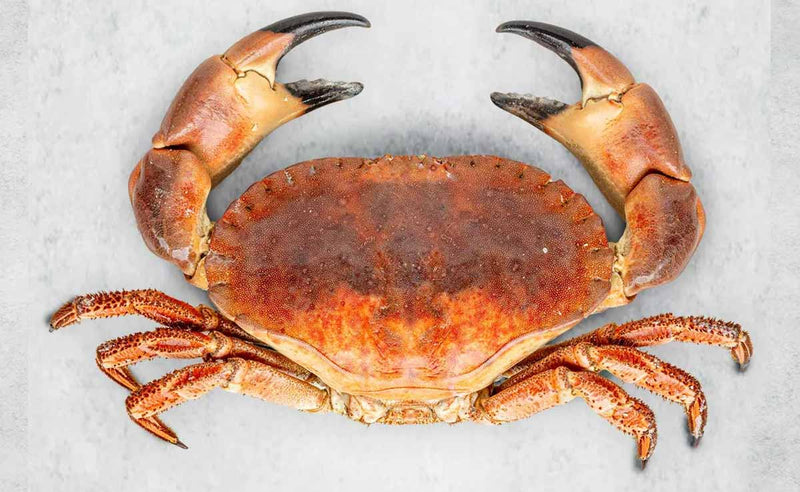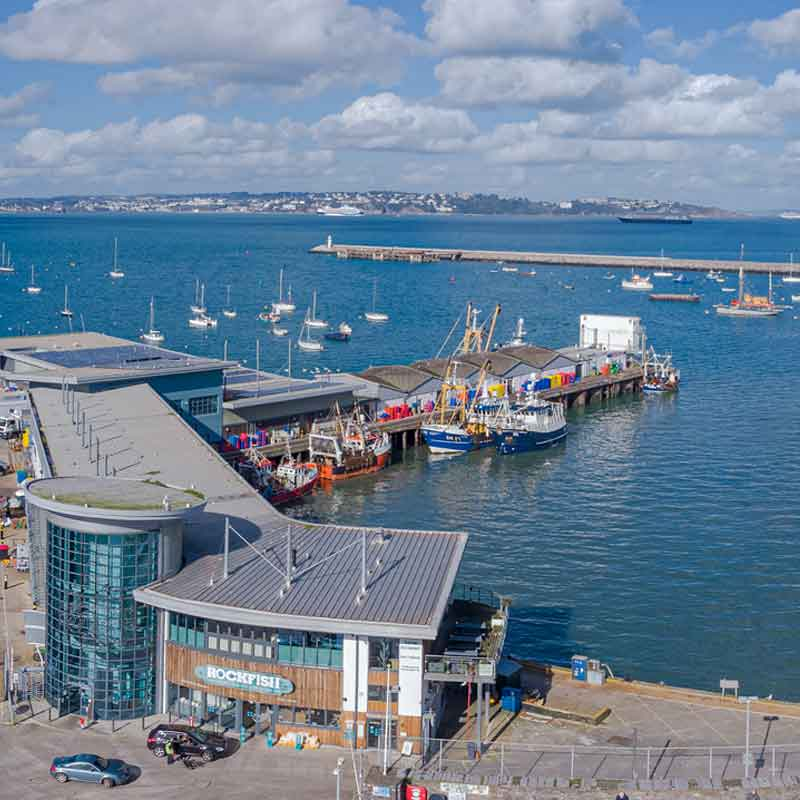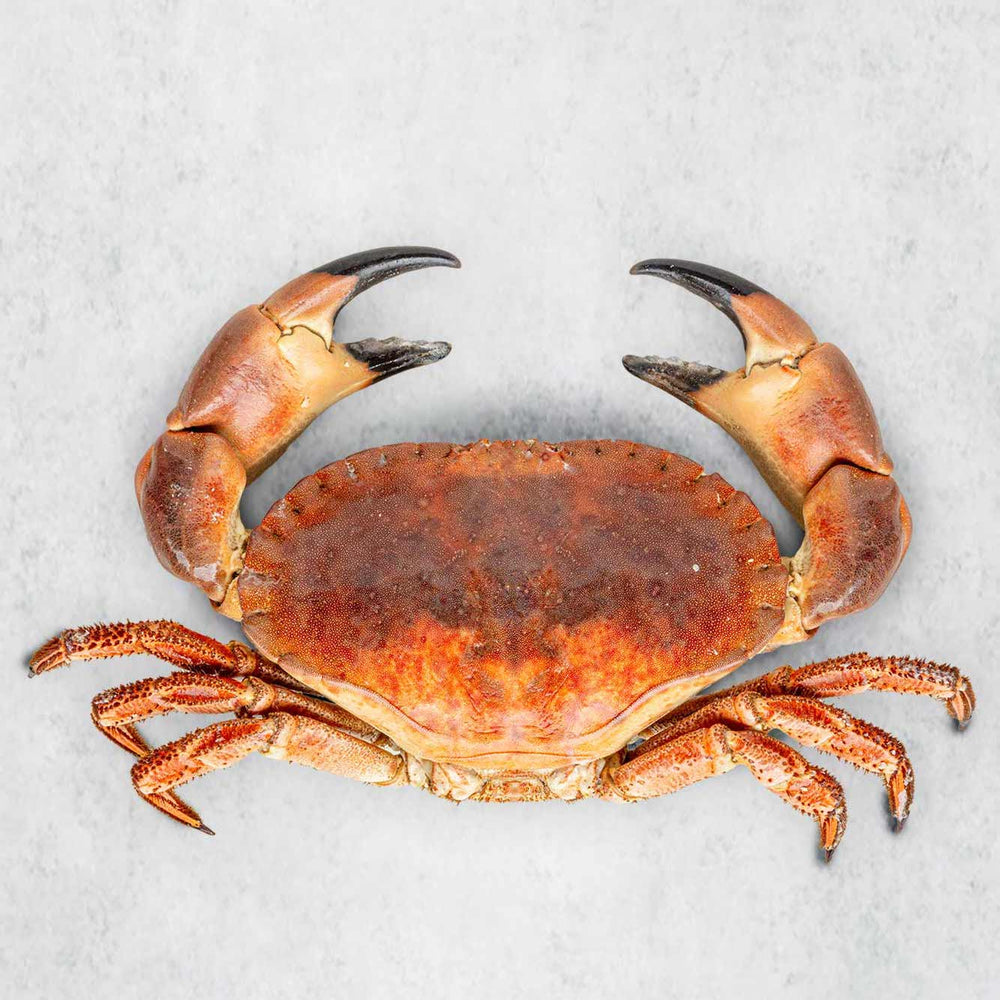It's all about flat fish
Let’s be honest, there’s nothing normal about flatfish. Imagine you’re walking in the park, and you spot a squirrel with both its eyes protruding out of one side of its head. Instantly you would think that squirrel was not having a particularly good day. The fact that flatfish have both their eyes on one side of their face, makes them radically unique to all other creatures on earth.
Worldwide there are 822 known species of flatfish, living in oceans, estuaries, and freshwater environments in nearly every part of the globe.
What’s the difference between flatfish and a not-flat-fish?
Without stating the very ruddy obvious, flatfish are flat, with oval or diamond-shaped bodies that lie flat on the seafloor. While ‘round fish’ are virtually everything else with fins that swims! Things like cod, mackerel, pollock, bass and whiting are all examples of round fish.
While, here in the UK the most common types of commercially caught flatfish include amazing species like turbot, brill, plaice, megrim, lemon sole, and Dover sole.
Do flat fish taste different?
Actually yes, flatfish on the whole tends to be much meatier than a regular fish, with quite specific flavours. Turbot for example has a deep pungent taste that can be described as mildly sweet and slightly nutty. Whereas Dover sole is very clean, making it an excellent vessel for flavour. Plaice meanwhile is pure umami: salty, sweet, with seaweedy notes.
So, they’re basically completely different?
Interestingly, flatfish start life as perfectly normal happy-looking round fish, with lovely, well-proportioned, symmetrical eyes, like some deep-sea version of Da Vinci’s Vitruvian Man. However, after about four weeks, things go a little topsy-turvey, as the flatfish fry undergo a process of adolescence that makes zits and bum fluff seem all rather tame...
Imagine the horror, you’re a wonderfully normal little fish fry when one day your skull suddenly starts to flatten and bulge, one eye migrates across your head, and one half of your body darkens to a muddy brown, while the other goes an immaculate pearly pale. The whole ordeal would be quite a shock for any young fish, but in the wild, it gives them a huge competitive advantage. Being able to lie flat and blend into the sea floor gives flatfish the ability to both ambush prey and hide from unwanted predators.
What flatfish should I buy?
The lengths to which humans have gone to mass produce the food we eat boggles. Farming flatfish has become increasingly pervasive in onshore facilities, in places like China and Spain. In fact, farmed turbot has become so popular in recent years, that it is now more widely available than the wild-caught alternative.
While we’re not against farmed fish altogether, our fear is that it’s often exceedingly difficult to gain fundamental details of the prominence of these farmed varieties, let alone, how they’ve been treated? What chemicals have been used in their production? How these farms have impacted their local environments? And what these flatfish have been fed on?
Instead, we always opt for locally caught, British flatfish that grow in abundance just a stone’s throw from our restaurants.
We know the name of the boat and crew from which the fish we serve are caught.
By having this stringent level of traceability, we’re able to directly monitor the catching method and the fish’s quality. Allowing us to sleep at night knowing we’ve done the best by the people and fish that we serve.
How do I know if my flatfish is fresh?
At Rockfish we always say: fresh is best. We squawk it relentlessly, like some evangelical seagull colony. And while this is absolutely true with almost all fish, with flatfish some gastronomes say different…
During the reign of King Louis XIV of France, when French cooking was at its pinnacle of sophistication and extravagance, turbot was often thought to be best eaten in Paris than on the coast. The transport time necessary to move turbot the 100 or so miles from the sea to the gold-gilded bistros of Haussmann's Paris, was essential to ageing the fish. It’s true, turbot cooked the day it’s landed can have a slightly mushy texture, while a night in the fridge can do a lot to firm up the meat, giving it a wonderfully rich texture.
Dover sole is the same. The prevailing wisdom with Dover sole is that it needs at least 24 or even 48 hours to reach its best.
It's the fishy equivalent to hanging game or ageing beef. Your Dover needs to ripen to allow its flesh to become tender and its taste to mature.
When you buy Prime Dover sole or turbot, brill, plaice or any other flatfish from our Online Seafood Market the fish has been shipped the day it was landed. By the time it gets plonked on your welcome mat, it’ll be perfect to eat.
Where to buy flat fish online in the UK?
Well, now that’s just a silly question. If you want super fresh flatfish, that’s traceable to the very boat on which it was caught. If you want to ensure care and quality at every step so that what you’re feeding yourself and your family is the very best. Look no further. It’s true, there might be nothing normal about flatfish, but that’s exactly why we love them.



